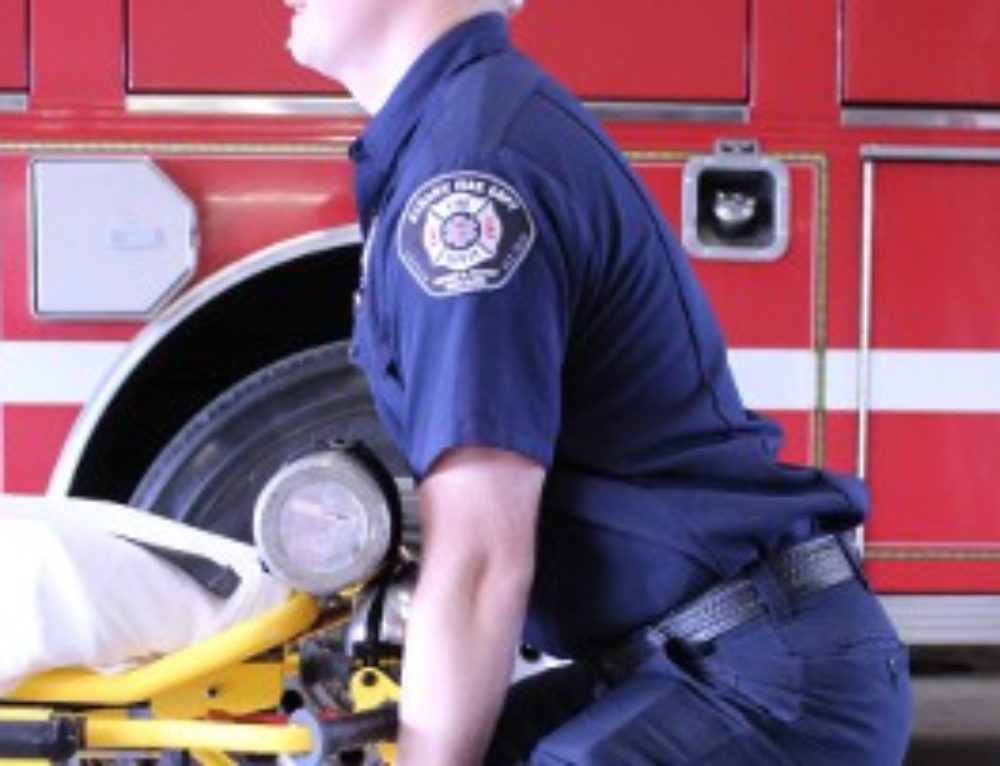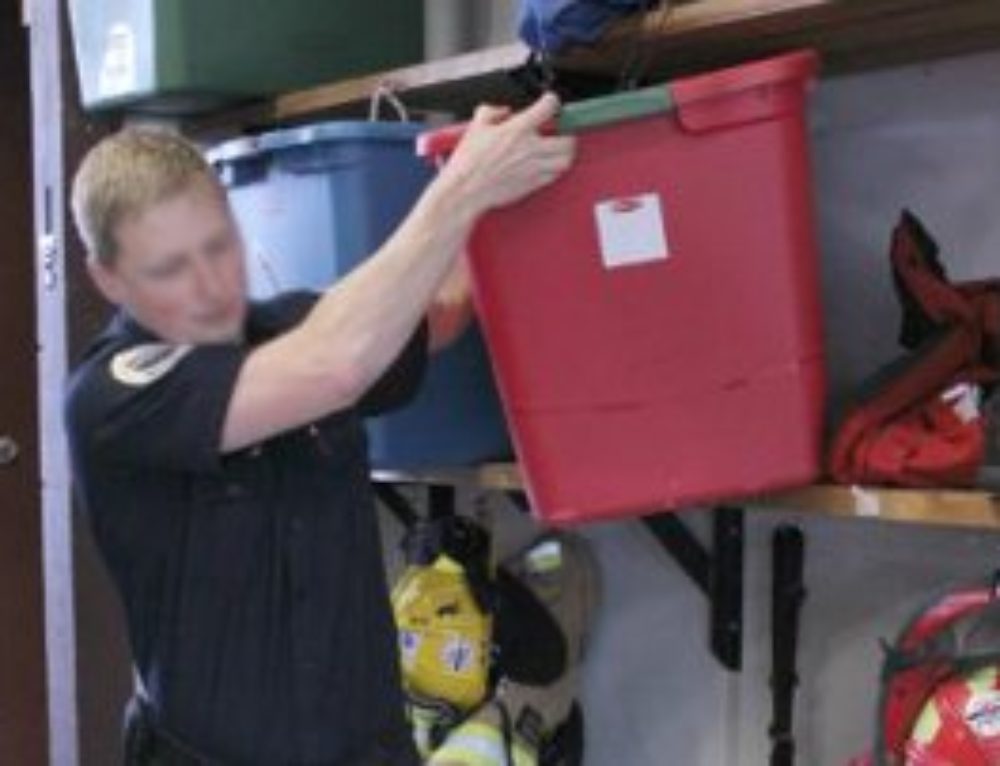Firefighter Stairclimb events have become very popular and a lot of firefighters (as competitive as you all can be) are asking: how can I improve my time?
The best way to train for a stairclimb is….yep, climbing stairs. However, extremely repetitive stair climbing can put your lower body joints, especially the knees, at risk for overuse injuries. Having inflamed knees would obviously be counterproductive to your training and your performance at the stairclimb competit ion.
ion.
The solution is to mix stairclimbing in with other exercises that will also improve lower body muscular endurance – the component of fitness that you want to develop. Further, if you’re wearing your gear and pack, you’ll need to work a little on upper body muscular endurance so those muscles don’t fatigue too quickly, which would compromise your posture and your ultimately your performance.
Below is a workout designed to work the intended muscles, in the right way, for performance at a stairclimb with gear. I’ve combined several exercises into one to make it more efficient and dynamic.
The Firefighter Stairclimb Workout
This is intended to be a circuit so you will do it more than once in one workout. Start with two times and add more as you improve.
Warm-up with 30 jumping jacks, 30 butt-kicks (run in place and kick your feet up to your glutes each time) and 30 forward leg swings (taking large steps, swing the opposite leg as high as you can)
Deadlift to Upright Row – 10 repetitions
Holding two hand weights, bend at your waist with a slight bend in your knees. Keeping your back completely flat, let your weight shift onto your toes as you lower the weights to just below knee level. Then drive your hips forward to stand up, squeezing your glutes and hamstrings. Once standing, bend the elbows and bring the weights up to chest level to complete the upright row.
Note: for the deadlift, I do not recommend much bend in the knees as that makes it more of a quadriceps exercise, nor bringing the weights all the way down to the floor. Click here to see an example.
Squat to Row – 10 repetitions
Holding on to a cable/pulley or a resistance tube wrapped around a secure surface, squat down making sure to stick your butt out and shift your weight onto your heels. Upon standing, pull handles back and squeeze the shoulder blades together to complete the row. Click here to see an example.
Walking lunges – 10 on each leg
Do this without weights or with light weights. The biggest mistake people make with walking lunges is letting their front knee come forward. So, with each lunge, take your time to shift your weight back, bring your hips straight down, and keep your front knee right above the ankle. Here is a good example of correct form (you will notice that the subject looks wobbly – that’s because doing them this way is much more difficult than letting your knees come forward!)
5-minute run with incline
On a treadmill, run at a light/warm-up pace for 1 minute. Now increase the speed to a light jog and increase the incline to at least 6%. Do this for 2 minutes. Now bring the incline back to 0 and increase the speed to a faster jog. Do this for 2 minutes. If outside, find a hill to run up.
Stair-climbing for 5 minutes
Using real stairs or a stairclimbing machine, match the pace that you want to be at for the competition for 5 minutes.
Repeat
Are you competing at a Stairclimb event this year or have you in the past? Where at?
If you’re not on my list to get more health tips like these, enter your name and email below.





I am going up for the 8th time. Last year was 17:33, and this year I really would like to go sub-17. Last year I used a Step-Mill with ankle-weights and 50 lb weight vest. This year I am doing the same but also adding an Elevation Mask.
Shift workouts are Crossfit using many of the exercises that you mentioned.
I am curious on other training programs.
Good luck to all
Michael
Good luck Michael!
Karllie
i like the workout! yes, i have done the seattle climb for several years. what worked for me was stairclimbing real stairs in a building with 25 stories or more, and taking the elevator down-saves the knees and back.
taking the elevator forces you back up the stairs with less rest. introduce the pack and then the pack and bunkers.
good luck to all
Hey Bob, I look forward to seeing you in Seattle then! And great idea taking the elevator down during your training to save the knees and back!
This will be my fourth (the second one was for the “average joe” – “the Big Climb” same venue same cause – it’s open to anyone – no gear). Biggest mistake last year was not enough REAL stairs. used mostly a stair mill. With your last news letter, my routines encompass the other muscle groups in your letter, I will likely add the lunges to my program.
Hey Richard, I like your point, REAL stairs are a bit better than a stair mill. The closer you can get to replicating the actually activity you’ll be doing, the better you’ll perform!
I will be participating in 4 events this year.
Race to the top-Charllotte NC, ALA fight for air
Charlotte NC, 9/11 Memorial Stair climb at FDIC & Charlotte
NC. I greatly appreciate your advice and will be using your
Training regiment as my model.
Thanks again
Wow Andy, I admire all the work you’re doing to both honor those who have sacrificed for us and fund raise for great causes. Go get em!
how many of you do double steps while climbing?
This is great stuff Karlie! It’s very similar to what I tell people to do. Hopefully I’ll see you in Portland this weekend. See you at the top 😉
thanks Jasper!
Hi Karlie, do you think the elevation masks or altitude mask would simulate breathing through an scba mask? When your in the stairs and breathing hard through your mask that is the type additional training I’m curious about? Thank you.
Unfortunately I don’t know about elevation masks so I couldn’t say. I think if it feels just the same as wearing an scba then yes. If you want to be able to train using an scba without having to fill up your tank you should check out blastmask http://www.blastmask.com